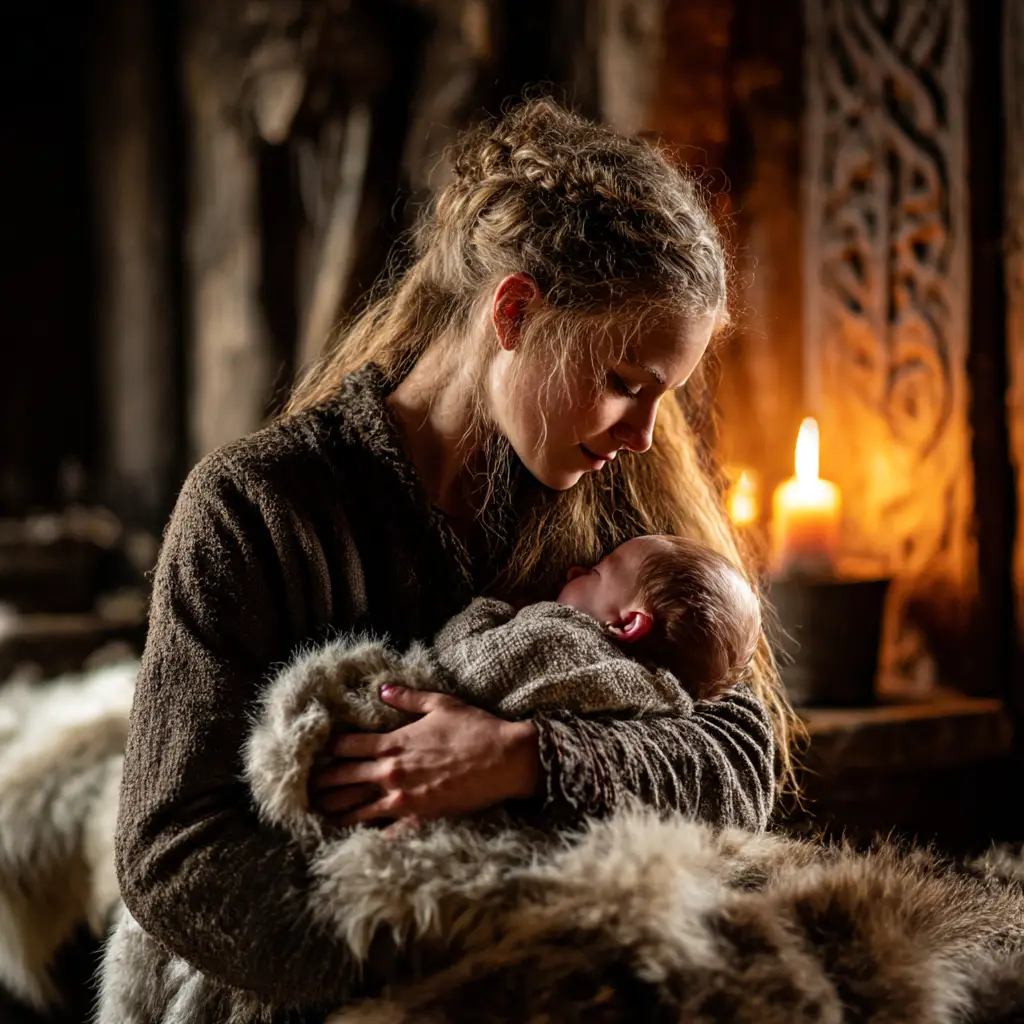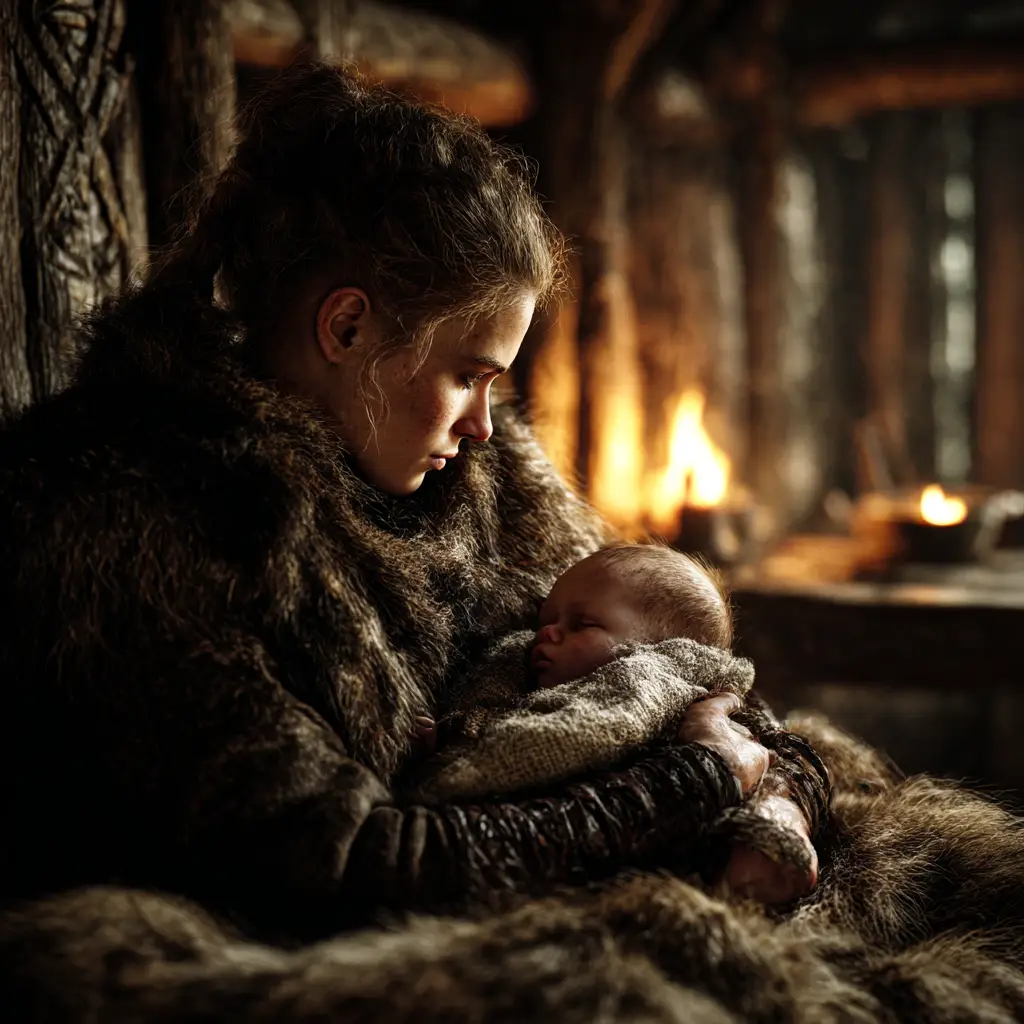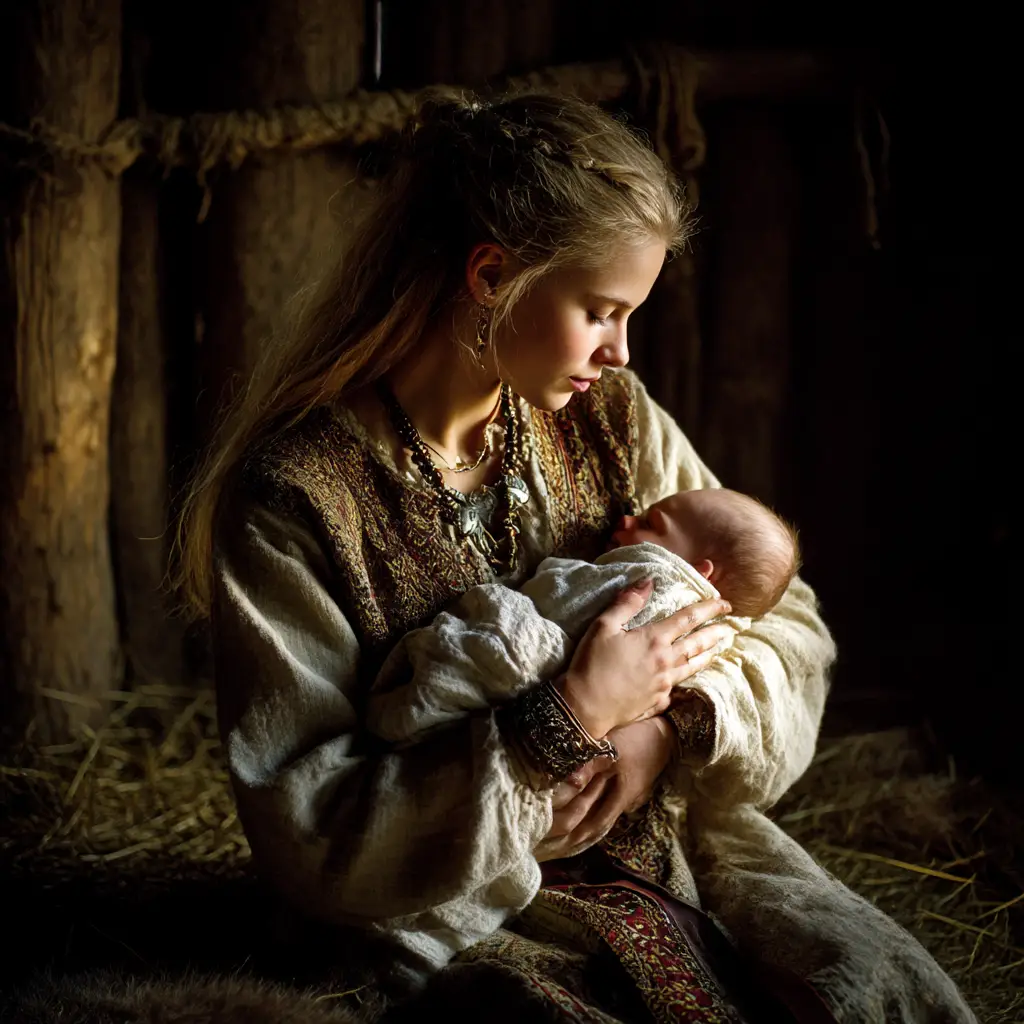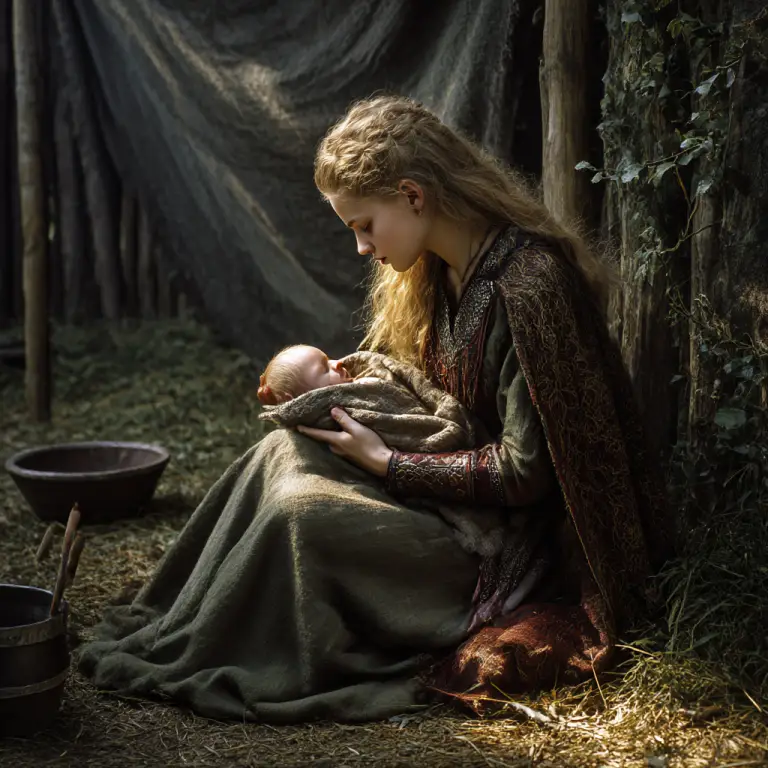Vikings and Birth: Life’s Beginning in the Viking Age
In Viking society, birth was both a deeply practical and spiritual event. The arrival of a new child was seen as a continuation of the family line and the strength of the community. While surviving written records are limited, archaeology, sagas, and comparative studies offer insight into how Vikings approached pregnancy, childbirth, and early life.
Pregnancy and Preparation
Pregnancy in the Viking Age was often met with a mix of hope and concern. Childbirth carried high risks, and many women and infants did not survive. Expectant mothers were cared for by their female relatives, neighbours, and experienced midwives. These women prepared herbs, charms, and practical tools to aid in delivery.
Wealthier families may have crafted small protective amulets or invoked the help of Norse goddesses such as Frigg, the goddess of motherhood and family, or Eir, associated with healing.
Childbirth
Most Viking births took place at home, usually in the family longhouse. The woman would give birth in a seated or kneeling position, supported by the women of the household and respected healers within the community or female relatives. Tools like knives or shears were on hand to cut the umbilical cord, and warm water and cloths were prepared to clean the mother and child.
They used knowledge passed down over generations, including herbal remedies to reduce pain, prevent infection, or stimulate labour. There are hints in the sagas and later folklore that charms or prayers were sometimes spoken during birth for protection and strength.
After Birth: Rituals and Naming
A newborn was not automatically considered part of the family. The child was first presented to the father, who would decide whether to accept the baby into the household. This moment, known as exposing or accepting, reflected harsh realities—if a child was unwanted or if resources were too scarce, it might be left to die, a practice sadly common across many ancient cultures.
Once accepted, the child was sprinkled with water in a naming ritual called vatni ausa, which some scholars believe may have influenced later Christian baptism practices. A name was then chosen, often honouring ancestors or heroic figures.
Early Childhood and Family Life
Viking children were raised in close-knit households. Both boys and girls learned practical skills from an early age—girls were taught weaving, cooking, and farming, while boys learned to hunt, fish, and use weapons. Families placed strong importance on loyalty, hard work, and honour.
Children were also believed to carry the strength and fate of their ancestors. Protective charms, such as Thor’s hammer pendants, were sometimes given to children to ward off illness or harm.
Death and Remembrance
Infant mortality was high, and many Viking children did not survive past infancy. Burial practices for babies and young children varied, with some buried in family plots, while others were laid to rest in simpler graves with small offerings.
Summary
Birth in the Viking Age was a moment of both vulnerability and great meaning. It was shaped by family traditions, the care of women, the invocation of divine powers, and a deep connection to ancestry. Despite the dangers, Viking families celebrated the arrival of new life as a sign of strength, continuity, and hope for the future.



